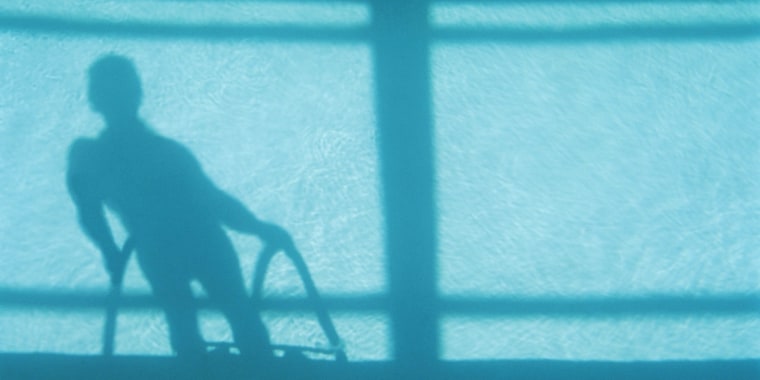With the Fourth of July on the horizon, conversations inevitably turn to celebratory backyard barbecues and pool parties. Although the Center for Disease Control and Prevention (CDC) has stated that there is currently “no evidence that the virus that causes COVID-19 can be spread to people through the water in pools,” the areas around pools can still pose a risk for transmission.
TODAY spoke with two epidemiologists for more insight on what practices pool owners should put into place to keep friends and family safe this summer.
Before you extend an invitation, think ahead
Dr. Keri Althoff, an epidemiologist at Johns Hopkins Bloomberg School of Public Health, said it's important to think ahead before inviting people over, particularly if you know you'll be seeing elderly or immunocompromised friends and family in the next two weeks. You'll want to reduce your risk as much as possible.
Is sharing your pool risky?
Both Althoff and Dr. Sten Vermund, the dean of the Yale School of Public Health, agreed with the CDC that transmission of COVID-19 through pool water has yet to be seen, most likely because water treatments like chlorine or bromine help further inactivate the virus.
To illustrate the potential threat of swimming in a pool, Althoff used a risk pyramid. The lowest level of risk is water transmission. Not only do the chlorine, bromine or salt water treatments help, but Vermund said the water allows for a greater dispersal of potentially harmful droplets.
The next level of risk, Althoff said, is surface transmission. This becomes important with tables and chairs — Althoff recommends that common-touch surfaces are cleaned off before guests arrive and after they leave. She also said that people should maintain hand washing practices during a day of swimming.
Althoff and Vermund said that maintaining at least six feet of physical distancing is vital, especially if masks can't be worn.
Keep a close eye on children
Whether it’s in the pool or any other activity, Vermund strongly suggested that if children are playing with friends, it should be with an adult keeping a close eye.
“I would have them mingle with the neighborhood kids under adult supervision with physical distancing, with rigorous mask usage indoors, with rigorous hand washing indoors, and outdoors for that matter,” Vermund said.
He stressed these were the three big-ticket principles he would abide by in a “data-free zone,” referring to the fact that there have not been any tests on pools and COVID-19. His fourth rule is simply preventing any overcrowding or going into a highly-populated area.
Althoff said that with small children herself, she has tried to teach the idea of social distancing through an easy action: airplane arms.
“I would say airplane arms are like the best thing to teach especially young kids, so that social distancing is you know ‘stick your airplane arms out’ and have your friends stick them out and you guys should not be able to touch,” she said. “And that is still probably a little too close because kid's arms are not three feet long, but it gets them in that practice of understanding what the distance is.”
She suggested that everyone wear masks when children and families are outside of the pool, especially when proper social distancing cannot occur.
These precautions can help keep younger children safe and help ensure the virus is not transmitted to any older relatives in a high risk category.
Ask friends and family to BYO
Whether it's a backyard barbecue or pool day with friends, Althoff advised that everyone should bring their own food. Towels and drinking water should also not be shared. As for chairs, Althoff and Vermund agreed that having your guests bring their own chairs helps limit shared surfaces. If that's not possible, wipe down tables and chairs with EPA-approved disinfectants or a DIY cleanser from the CDC website.
If you do offer guests food, Vermund suggested that the host should serve it using individual plates. He strongly advised against setting out a communal chip bowl, for example.
“Pretend you're in the hospital and you're distributing food to the patients,” Vermund said. “You're not bringing a giant bowl, it's more like take-out.”
Tailor your guest list to your space
Because every outdoor pool setup is different, Althoff said the most important consideration is that everyone is able to maintain proper social distancing practices. For this reason, Althoff suggested that families should be extra cautious when swimming in public pools and to “find another time, find another pool” if it is too overcrowded.
Vermund said anyone without a mask should actually be 12-feet away from other people as an added buffer.
“You may be able to have your neighbor's kids over at the pool, but not the big party that you're used to having and not sacrificing these principles of physical distancing,” Vermund said. “People have to realize that this year's special, this year is constrained, this year we're asking people to think about social good, not just individual good, and next year we may be in a very, very very different place.”





